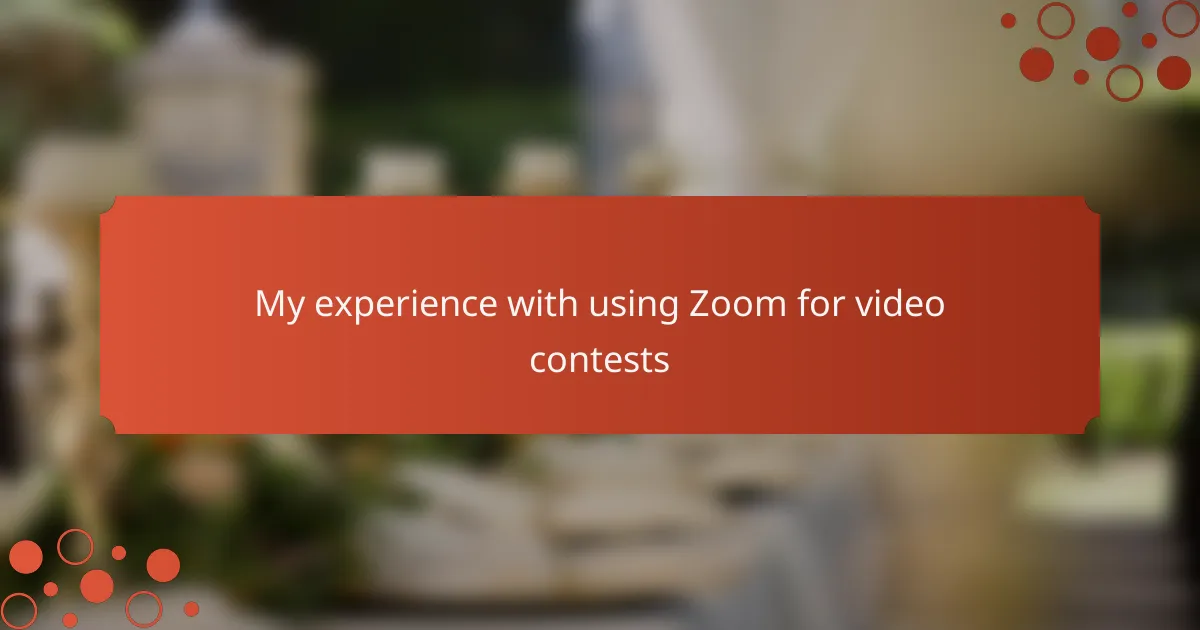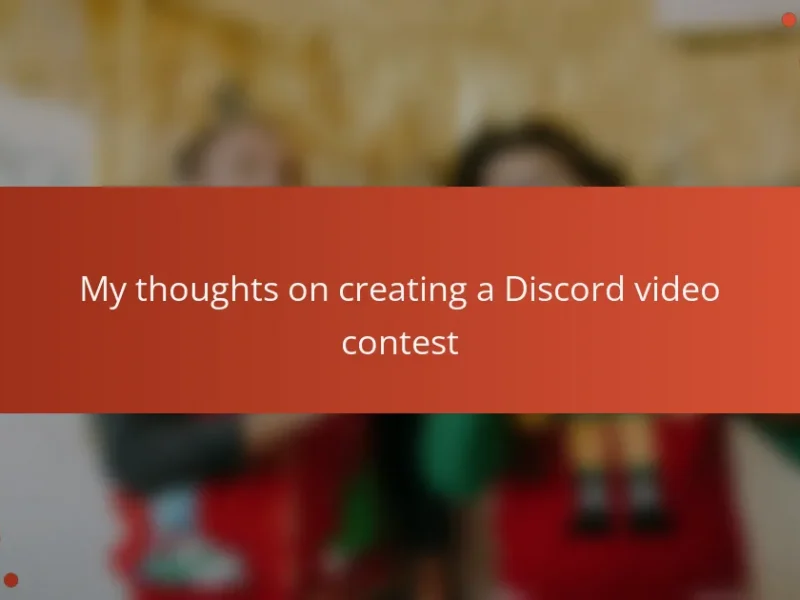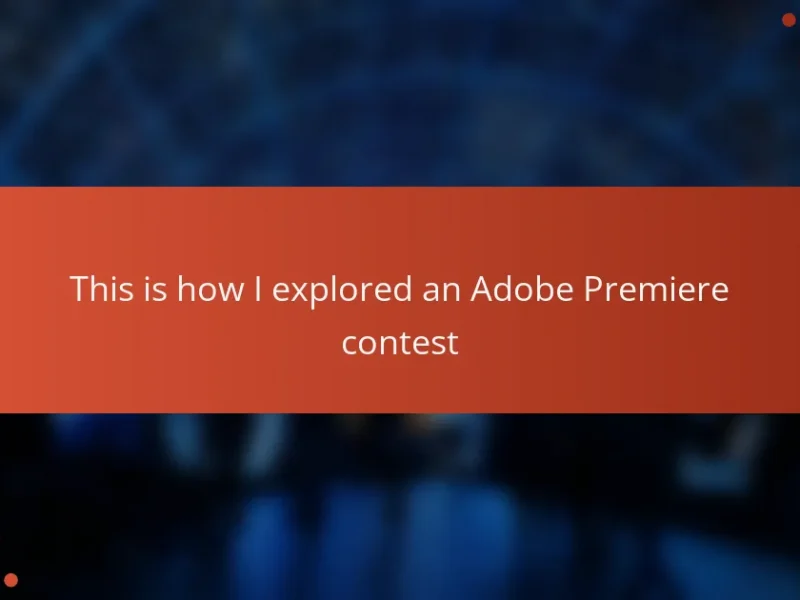Key takeaways
- Video contests promote creativity and storytelling, engaging participants and viewers through unique expressions.
- Utilizing Zoom features like screen sharing and breakout rooms enhances organization and interaction during contests.
- Effective participant management, including clear ground rules and the spotlight feature, maintains focus and engagement.
- Preparation, including tech checks and clear communication, significantly reduces stress and ensures a smooth event flow.
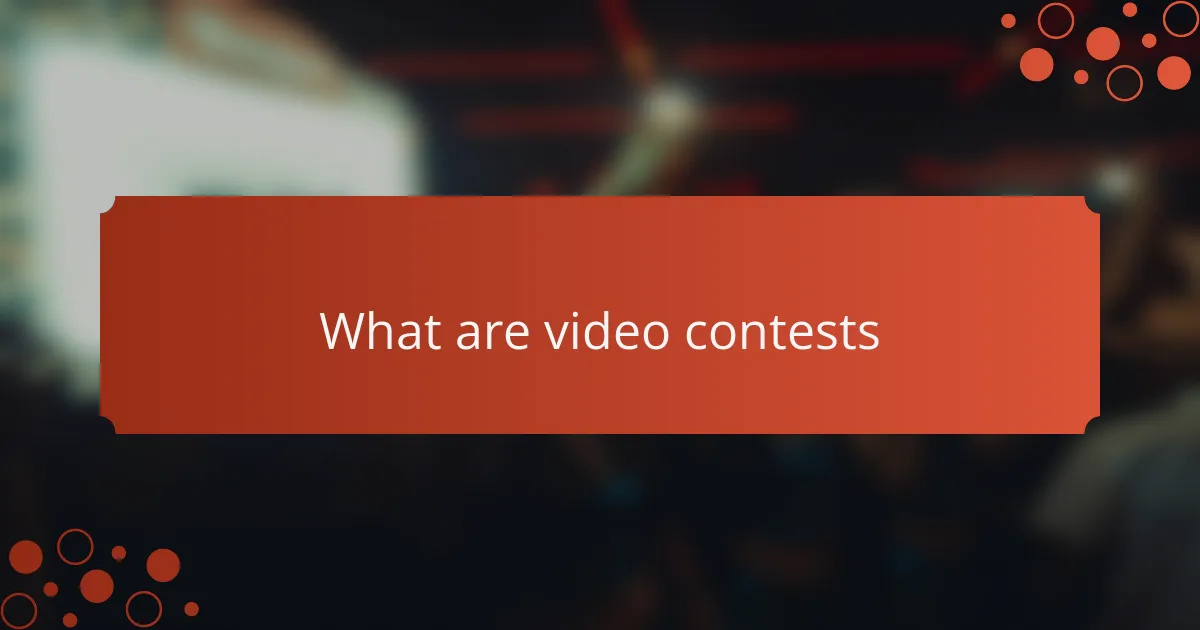
What are video contests
Video contests are competitions where participants create and submit videos to be judged or voted on. They can vary widely—from showcasing talent, telling stories, to promoting ideas or products. Have you ever wondered how a simple video can capture so much creativity and emotion in just a few minutes?
From my experience, video contests bring out the best in people, encouraging unique ways to express themselves on screen. It’s fascinating to see how different styles and perspectives come alive, making every entry a personal journey. Why do you think videos resonate so deeply with us compared to other forms of competition?
In essence, video contests combine creativity, competition, and entertainment, engaging both creators and viewers alike. They’re not just about winning but about sharing a vision and connecting through storytelling. This blend is what makes video contests such a captivating and dynamic form of entertainment.
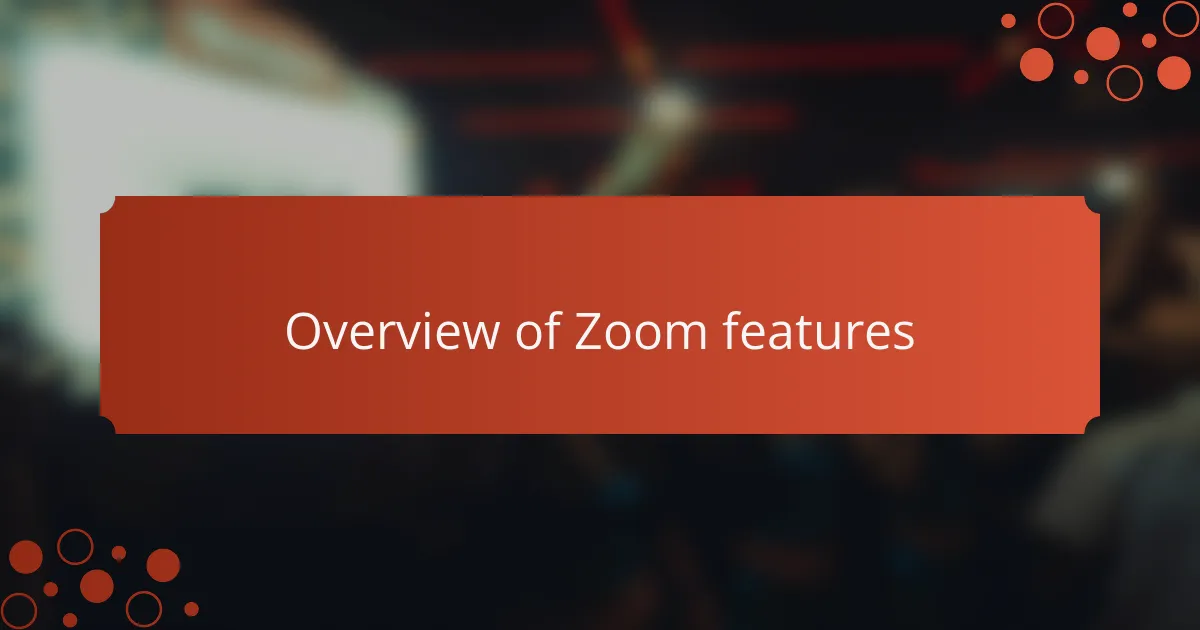
Overview of Zoom features
Zoom offers a range of features that make hosting and participating in video contests surprisingly smooth. From my experience, the screen sharing function is a standout—it allowed contestants to effortlessly showcase their videos in real time, which really kept the momentum going. Have you ever tried juggling video playback while managing an audience? Zoom takes that pressure off.
One feature I found incredibly helpful was the breakout rooms. They created private spaces where judges could discuss entries without interrupting the main session. This kept the contest organized and respectful, something that felt crucial when emotions ran high and opinions varied. It’s those small touches that elevate the entire experience.
Of course, chat and reaction buttons added a layer of interaction that mimicked a live audience’s energy. Seeing people’s instant thumbs-up or claps made the virtual space feel more connected and alive. Don’t you think those little moments of feedback are what turn a simple video contest into a shared celebration?
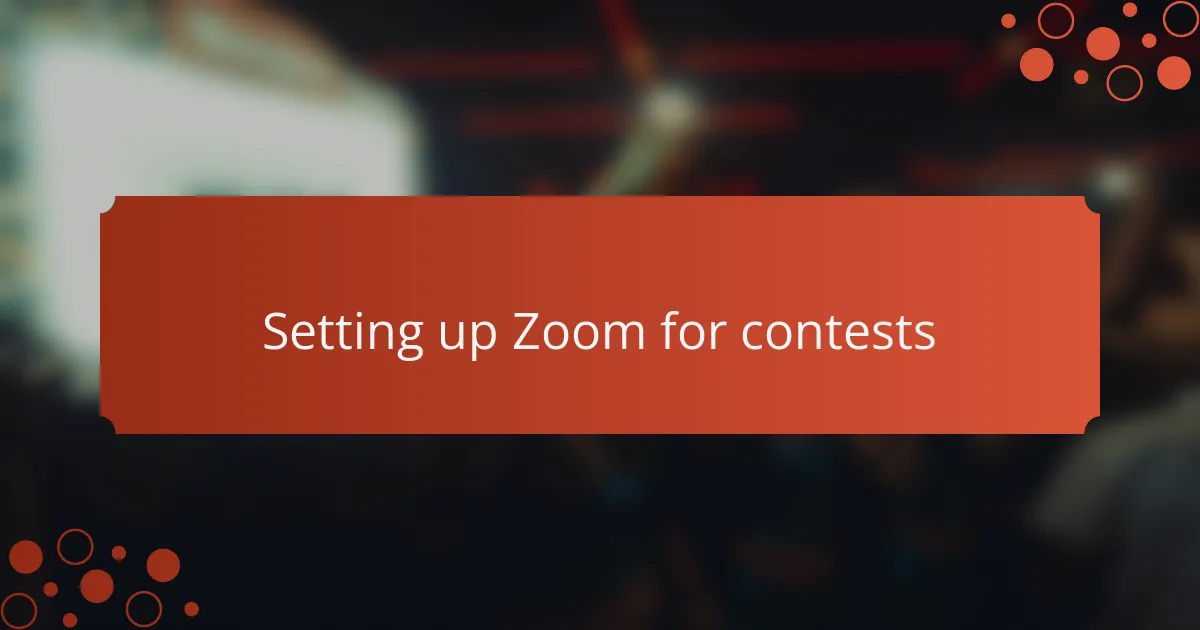
Setting up Zoom for contests
Setting up Zoom for contests was surprisingly straightforward once I got the hang of it. I made sure to create a dedicated meeting link and enabled features like screen sharing and waiting rooms to keep things running smoothly. Have you ever felt the anxiety of technical glitches during a live event? Having these settings pre-configured gave me peace of mind.
I also spent time customizing participant permissions—deciding who could share screens, mute or unmute, and chat. This control helped maintain order and focus, especially when dozens of people joined. From my experience, striking that balance between openness and structure is key to avoiding chaos.
One trick I learned was to run a quick rehearsal with contestants and judges beforehand. It felt a bit nerve-wracking at first, but it paid off. Seeing everyone comfortable with Zoom’s layout made the actual contest flow effortlessly and created a relaxed, confident atmosphere. Don’t you think preparation always eases the pressure? I sure do.
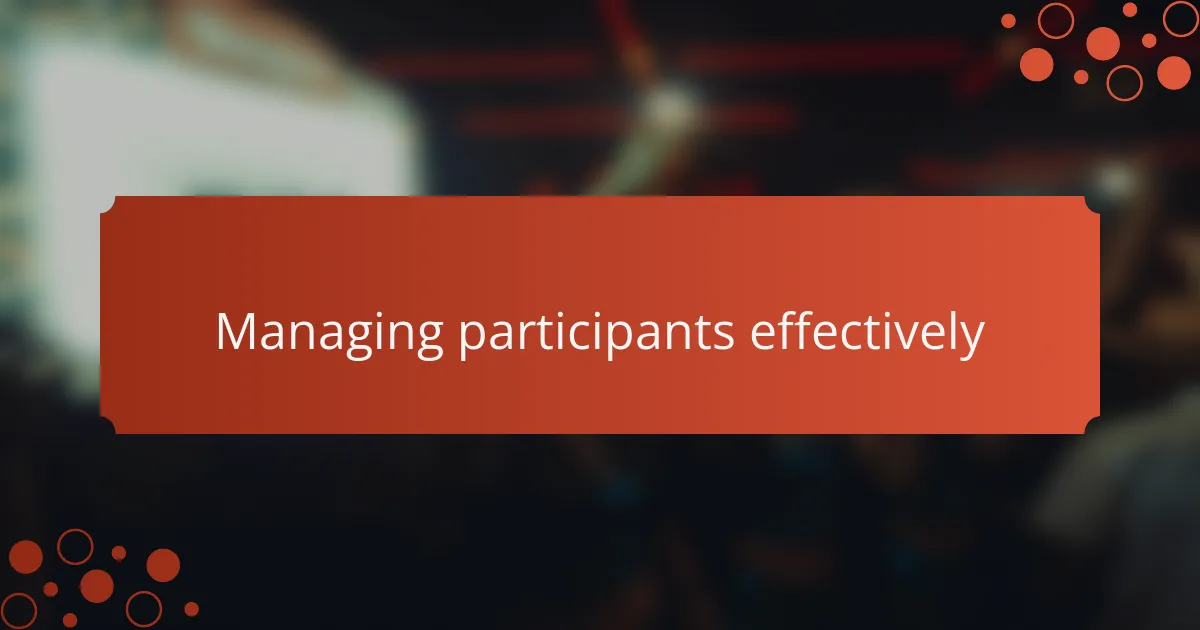
Managing participants effectively
Managing participants effectively on Zoom was definitely one of the trickier parts at first. I remember juggling muting and unmuting participants during a livestreamed contest—sometimes people forgot to mute themselves, and background noise could be distracting. Have you ever tried to stay focused while sudden noises pop up in the background? Setting clear ground rules at the start really helped keep things calm and professional.
Another thing I found helpful was using the “spotlight” feature to highlight the current speaker or presenter. It gave everyone a clear visual cue about who was “on stage,” which made transitions smoother and kept attention focused. It felt a bit like being a director backstage, guiding the flow without anyone noticing the effort behind it.
Of course, managing participant engagement meant balancing control with friendliness. I made sure to encourage chat interactions but kept an eye on moderating comments to prevent spam or distractions. It was important to me that everyone felt welcomed but not overwhelmed. How do you strike that line between lively discussion and keeping the event on track? For me, it took some trial and error to find the perfect rhythm.
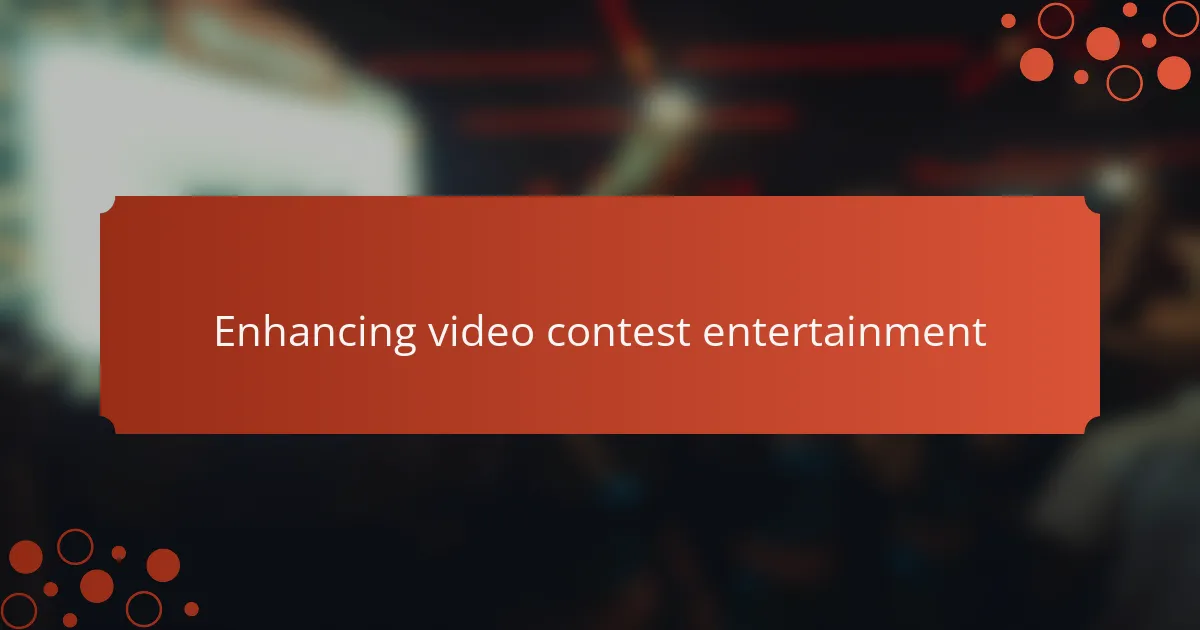
Enhancing video contest entertainment
Enhancing video contest entertainment on Zoom felt like unlocking a new level of engagement for me. Watching contestants share their work in real time, while receiving instant reactions from the audience, created a vibrant energy that was almost electric. Have you ever experienced that rush when creativity meets live feedback? It’s a game-changer.
One thing I noticed is how Zoom’s interactive features transform a passive viewing experience into a dynamic community event. The ability to cheer in chat, see judges’ faces light up, or watch participants celebrate together made the contests feel alive, even through a screen. To me, these moments of connection are what truly elevate the entertainment value.
Sometimes, it’s the little enhancements that make the biggest difference. For instance, using screen sharing alongside spotlighting the presenter helped me keep the contest flowing beautifully without losing anyone’s attention. It felt like orchestrating a well-rehearsed show where every element fits perfectly. Doesn’t well-timed tech support make any event far more enjoyable? I certainly think so.
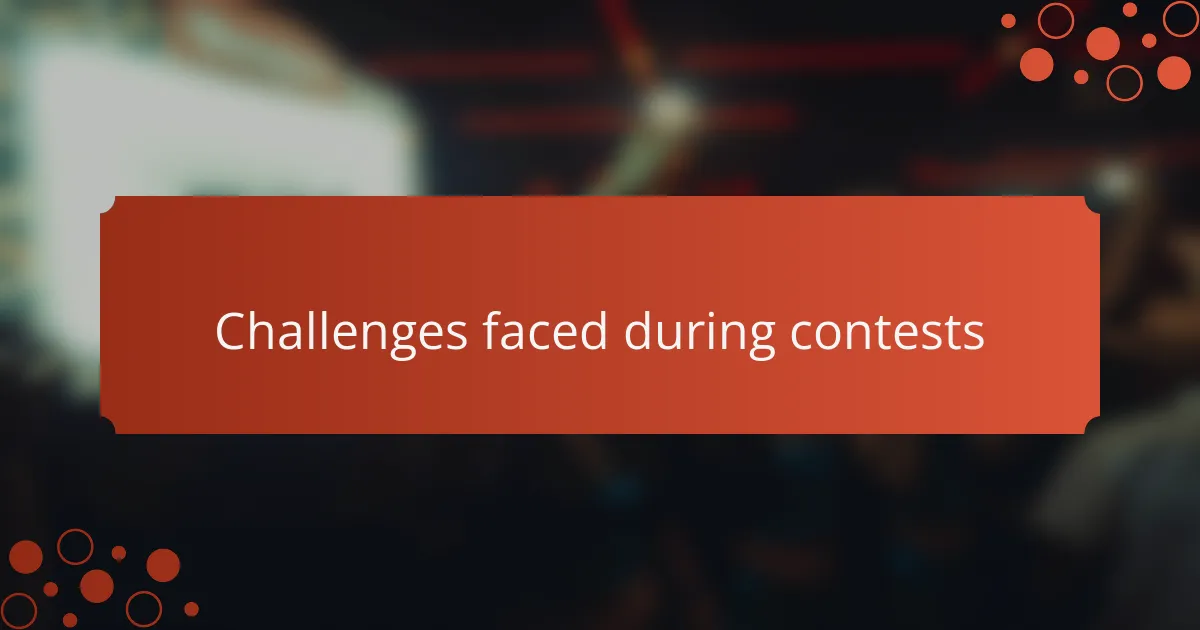
Challenges faced during contests
One of the biggest challenges I faced during contests was dealing with unexpected technical glitches. Imagine the tension when a video lags or audio cuts out just as a contestant is pouring their heart into their performance. It’s frustrating, but it taught me the importance of having backup plans and staying calm under pressure.
Keeping everyone engaged was another hurdle. Even with Zoom’s handy features, it’s easy for participants to get distracted or lose focus during long sessions. I found myself experimenting with pacing and interactive moments to keep the energy alive—because nobody wants their contest to feel like a never-ending meeting, right?
Then there’s the challenge of managing time effectively. When dozens of contestants are eager to present, sticking to strict time limits can feel like navigating a tightrope. I learned to balance fairness with flexibility, making sure everyone felt heard without letting the event run overtime. Have you ever tried to keep enthusiasm high while also watching the clock? It’s a delicate dance, to say the least.
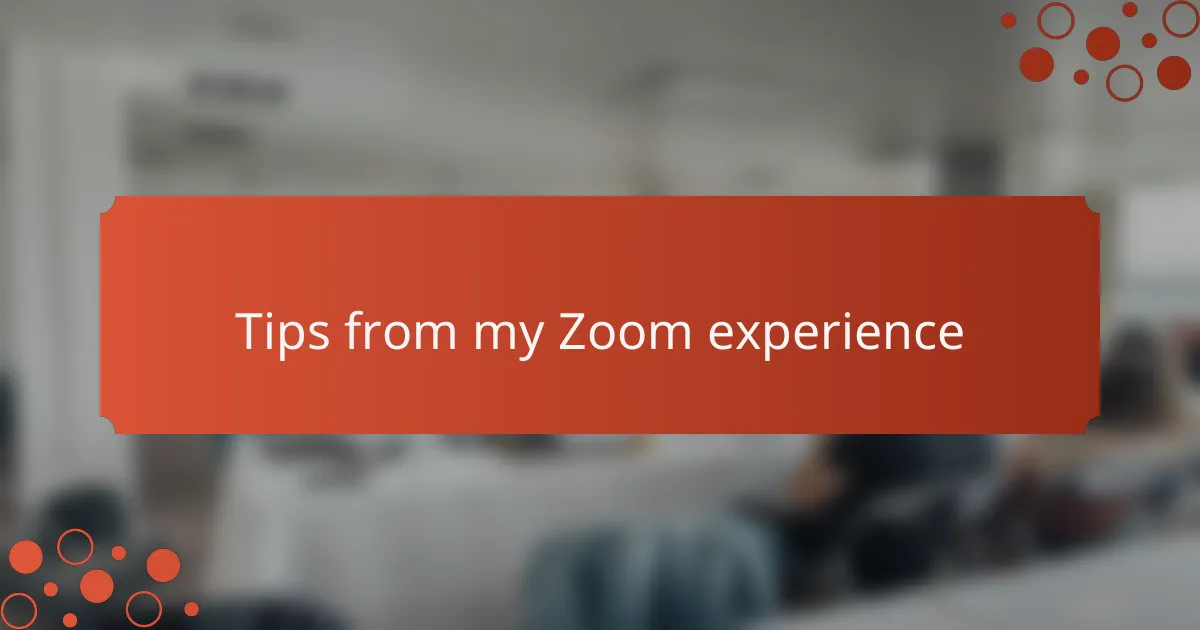
Tips from my Zoom experience
One tip I can’t stress enough is the importance of testing your audio and video before the contest starts. I once rushed into a session without a proper check, only to realize my microphone was muted during the first few presentations. That mix of embarrassment and panic taught me that a quick tech run-through isn’t just a nice-to-have—it’s essential. Have you ever experienced that sinking feeling when something so simple goes wrong live? Trust me, a little prep saves a lot of stress.
Another trick that made a world of difference was using Zoom’s waiting room feature to admit participants one by one. It gave me a moment to confirm everyone’s readiness without chaos and kept any unexpected guests from jumping in at the wrong time. Managing entry felt like having a backstage door to the event—controlled, smooth, and professional. Do you find that having these small controls helps keep the event feeling polished? I sure do.
Lastly, don’t underestimate the power of clear communication with participants ahead of time. Sending out concise instructions—like how to mute and unmute or when to share screens—helped minimize confusion during the contest. When people know what to expect, the flow feels natural and relaxed. Have you noticed how just a few simple guidelines can shift the vibe from hectic to harmonious? It’s one of those subtle moves that made hosting on Zoom so much more enjoyable for me.
